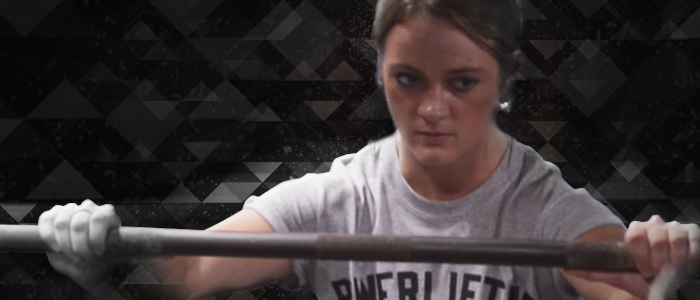
I’m not entirely sure about the accuracy of this statement or even where it came from, but in a notebook I keep with me every day I have the following sentence written down:
“Dominance” is a neural preference that has become a pattern.
I have a feeling a year from now (likely less time) I may feel I’ve entirely put my foot in my mouth here, but I’m really, really drawn to that statement. I think there’s some merit to it; I’m just not entirely sure how to put it in context with what I’m chewing on. I’m not thinking about left to right dominance. I’m talking about chains of muscles, movement patterns we tend to feel stronger in, postures and positions that we favor, any preferential bias that we have.
Every morning when I get up, I put the same pant leg on first. When I put on my coat, one arm almost always goes in before the other. I tend to sit, stand, and walk certain ways. I don’t often think about those things: it’s partially composed (very simplistically speaking) by certain tendencies that have to some degree become a neural preference for one reason or another. My body chooses to access that preference (action) when my brain says to do something (intention), and I hardly ever have to think about it. This is a very simplified way to think about movement: the interplay of intent and action. The “how” is the pattern, and the one that affects us from a standpoint of function, pain, mobility, and strength. In our training it is a huge component of technique, and it is important to consider that the patterns we access in our training, if not intentionally managed, can bleed through into the rest of life and impair function. How many of you feel “broken” or immobile when you’re not under a bar?
RECENT: Rehab and Training: Forward-Thinking Prevention, Retrospective-Thinking Treatment
We are creatures of habit in most if not all parts of life, but especially as we approach an activity that is so technique-dependent that one small change can have a relatively dramatic effect. We’re dynamic, and as much as we think about ourselves as compartmentalized “in the act of training” or “not training” our bodies adapt on both a neurological as well as somewhat structural level based on how we spend our time. Unless we learn how to intentionally access opposing patterns, whatever patterns we access routinely can often start to feel more like our body’s “home base.” It becomes a part of the unintentional habituation we find ourselves in during the day — the patterns we access while we train become more “easily” accessed and, in turn, can make it difficult to find others. This isn’t necessarily a bad (or good) thing, in moderation. In the presence of addressing injury, however, compensatory habits can lead to a new home base that encourages the dysfunctional strength described in my previous article.
To be honest, I hate the word “compensation.” It is nails on a chalkboard to me in most contexts; it’s a basket term that someone usually gives me when they’re unsure of how else to explain something and feels like a cop-out because we haven’t taken the time to educate ourselves enough to try and understand “why” and fix it.
“I shift right to compensate for my left knee. I’m right leg dominant.”
It may very well be true — but it started somewhere. And moreover, that ‘compensation’ really could just be called preference that has now become a pattern because you used it over and over. In other circumstances, this preference can be advantageous from a perspective of either a) technique, or b) injury prevention.
Compensation is simply your brain finding what it perceives as a more efficient, less painful, more comfortable, or structurally sound way to match intent with action. And like anything, when you do it repeatedly and it becomes a familiar movement pattern, you’re no longer “compensating.” You’re just doing ‘you’ the way your body and brain have gotten used to doing it. Compensation in itself isn’t a bad thing; it’s when we can’t turn off the preference mechanism or move outside of that pattern that I see its advantages dwindle and injuries develop.
Where am I going with this?
So, I wrote this super long article talking about three key things I consider when looking at asymmetries. I received a lot of messages about that article, and I thought it may be good to go into each of those key points more in depth. The first big takeaway was to maintain strength throughout an entire range of motion, because at any point, the role of multiple muscles acting together on a joint can be as complex or simple as we make it. The role of a muscle may change at given joint angles, and certain positions lend themselves to increased strength, stability, and power in certain patterns. And that’s true. What I love about the simplicity of continuing to train throughout a full range is that you’re promoting functional strength in the joint or muscle that you’re “trying” to, but you’re getting the added benefit of coordination and (hopefully) proper timing of surrounding stabilizers as well. These opposing agonist/antagonist chains need to be balanced for a number of reasons. This brings me to my second point, something I picked up from my clinical mentor that has great carryover to lifting: the dimmer switch theory.
In the previous article, I summarized this theory in a few key points:
1. We like to think about muscles as having an on or off switch, like a light. It’s a little more complex than that: at any given point, sets of muscles (and their opposing sets) need to have a switch that more closely resembles a dimmer switch on a light, where you can adjust the brightness to best suit the need of the task.
2. Our bodies build patterns and habits based on muscles or chains of muscles we routinely access. We need to practice balancing the dimmer switches on those chains for healthy movement to promote maximal force generation with maximal stability.
3. Sensitizing these dimmer switches between opposing chains is one component of technique when coupled with timing and generalized strength for force production.
4. Injury or dysfunctional movement can occur when one of these switches grossly overpowers the other — partially controlled by the nervous system, partially a function of strength or hypertrophy (which, arguably, could be the result of a nervous-system controlled preference already).
I want to come back to that sentence that I was a little unsure of at the beginning of this:
“Dominance” is a neural preference that has become a pattern.
I think we pattern into more than just preference of one muscle over another: I think we pattern into a preference of polyarticular chains that cross more than one joint. To address any motor patterning without looking either up or down the chain from the segment in question is lacking. There are multiple schools of thought that take this approach and each has outlined relatively specific chains. While I can’t say I adhere 100% to any one camp in particular, there are some that make more sense to me when I stop and look at functional anatomy (again—google an anatomy chart, and actually appreciate that most of our muscle fibers don’t run in a simple straight line). It’s easy to see where these different systems took root. It makes sense to think if you’re moving differently through one joint, you’ll have to adapt both above and below that segment to accommodate. When we do this, the dimmer switch for these muscular chains becomes turned up. This is not inherently a bad thing; we need strength for what we do.
I’m still searching for the best way to talk about this, because the way we pattern, the dominances we acquire, the timing of recruitment issues, and the positional changes are all multifactorial and murky, and the last thing I’d want someone to take away from reading any of this is that there isn’t merit to accommodations our body has made to move out of injury, or that there is only one way to address issues. I’ve mentioned before I have a LOT to learn about motor learning, and unfortunately, there isn’t a whole lot of conclusive research out there.
In light of that, I present one view point, that ties together concepts from very different schools of thought in a way that has helped me address my own rehab as well as athletes I’ve worked with. That being said, something I don’t think we talk nearly enough about is what happens when one chain overpowers another and the dimmer switch is dialed all the way down: inhibition. This ones still kind of muddy for me, but these are my current thoughts: Just as it could be said that the more routinely we access one chain or group of muscles the more easily we can “find” them, the same can be said for the opposite; the less frequently we access a chain (or individual muscle), the harder it becomes to find it. So hey, let's throw some weight on the bar, and see if increasing the demand helps us “find” those muscles. Maybe we just need to make them work harder, right? Most times (please don’t read that as always), this is wrong.












